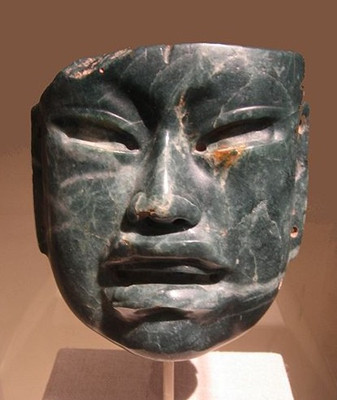"It means that I have a continuity of culture that is quite astonishing.
這表明我們有著驚人的文化傳承。
Many Latin Americans who are merely migrants from European countries, or do not have a strong Indian culture behind them,
很多移民自歐洲或是對印第安文化沒有認同感的拉丁美洲人并不欣賞墨西哥文化的深厚底蘊。
don't have the extraordinary strength of the culture of Mexico, which begins a very long time ago-as proven by the Olmeca culture, which begins in the twelfth or thirteenth century before Christ.
而這一文化在基督誕生前約一千二百年至一千三百年便已出現。
"We consider ourselves heirs to all these cultures.
我們自認為是這些文化的繼承人。
They are a part of our make-up, a part of our race.
它們是我們性格的一部分、種族的一部分。
We are basically a Mestizo country, Indian and European.
我們基本上是個印第安文化與歐洲文化混血的國度。
The Indian culture has infiltrated into our literature, into our painting, into our habits, into our folklore.
印第安文化滲透了我們的文學、繪畫、生活習慣以及民間傳說。
It is everywhere.
它無處不在。
It is a part of our heritage, as much as the Spanish culture, which for us is not only Iberian but also Jewish and Moorish.
和西班牙文化一樣,它也是我們傳統的一部分,而西班牙文化對我們來說也不只是伊比利亞人的文化,還包括猶太人和摩爾人的。
So Mexico is a compound of many, many civilisations and part of them of course are the great Indian civilisations of the past."
所以說,墨西哥是多種文化的綜合體,其中之一便是古老偉大的印第安文明。
So who were the Olmecs?
那么,奧爾梅克人到底是誰?
Whose face does this mask show, and how was it worn?
這張面具上是誰的臉?它又該如何佩戴?
Olmec masks have been intriguing historians for a long time.
奧爾梅克面具一直讓歷史學家著迷。
Scrutinising their features, many scholars believed that they were looking at Africans, Chinese or even Mediterraneans, who'd come to colonise the New World.
在仔細查看它們的臉部特征后, 有學者認為它們是非洲人、中國人甚至是地中海人,是來此地開拓新世界的。
I suppose if you look at our mask, wanting to see an African or a Chinese face, you can just about persuade yourself that you can, but the features, in fact, are totally characteristic of Central American people.
我猜,如果你想在我們這副面具上找到非洲人或中國人的面孔特征,你一定能說服自己。但事實上,它體現的是十足的中美洲人的特點。
This face is one that can still be seen in the descendants of the Olmecs still living in Mexico today.
這樣的面孔在今天生活在墨西哥的奧爾梅克人后裔身上還能看到。












